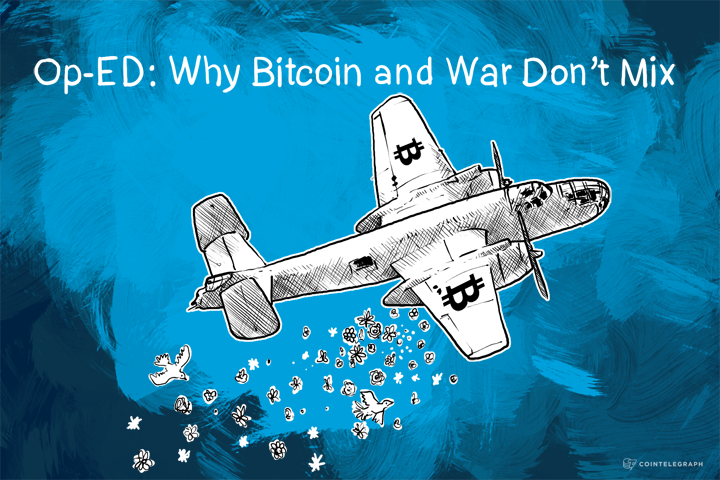Conflict gives Bitcoin an opportunity, the traditional perspective goes – but in the current world of conflict, it could well be argued that economics are being overlooked, and that Bitcoin’s real spotlight will be illuminated when peace returns and money becomes a talking point once again.
In a speech at Coin Congress in May, Roger Ver noted that governments’ ability to wage war in this century has been determined by an equal ability to print and use fiat currency at will. “With Bitcoin,” Ver said, “because there is a limited supply, that sort of thing can't happen.”
Indeed, the conflict points making headlines today – Ukraine, the Middle East and increasingly Hong Kong – are doing nothing to reduce the already heavily indebted economies of its participants, irrespective of the significance of their role. The US, in terms of financial cost, is an obvious example, as are EU states supporting action in both conflict zones, not to mention those states directly involved in the fighting.
Russia and Ukraine have seen their currencies rapidly lose value, with the ruble’s performance better only than that of the Argentine peso. Nonetheless, it is no secret that exchange rates are meaningless with currencies like the US dollar, having been subject to quantitative easing, and the euro, interest rates in whose economic zone are at 0.05% and inflation at 0.3%.
With such dire economic data, it would seem prudent to have expected a sustained Bitcoin rally long ago, so why has this so far not occurred?


As the charts above suggest, political crisis would appear to engender more interest in cryptocurrency than all-out physical conflict. To take Ukraine as an example, the Maidan movement of November 2013 – February 2014 sparked not only increased interest in information Bitcoin, but also led to a huge number of outlets appearing throughout the country very rapidly. Once political turmoil gave way to physical confrontation, however, this interest appears to die off.
In contrast, news of the Cypriot bailout in March 2013 caused a spike in interest on the subject followed closely by Bitcoin interest.
Should there be significance in these correlations, it could well be down to a distrust of fiat economies slowly being engendered since 2008. Consumers, panicked by economic troubles seen to be intrinsically tied to political maneuvers, are quick to seek out alternative means of storing their wealth.
In the past, where possible, gold was used to this effect. Today, the unwieldiness of the asset is at the fore, and the flexibility Bitcoin offers clearly makes it the ‘go-to’ option for those interested in a quick solution to safeguard against financial impotence.
This flexibility need not be overlooked. Bitcoin can be easily sold for commodities, other digital currencies or goods and services, whereas gold must first be sold for fiat. In struggling economic zones, the likelihood of succeeding in this respect is slim.
Struggling economies are known for their jitteriness around Bitcoin at times when economic stability is top of the agenda. One only need consult the history of government statements about digital currency from Argentina to observe this trend. Similarly, in Russia, prior to physical confrontation with Ukraine, Bitcoin was subject to debate in Moscow, with its being made de-facto illegal now overshadowed by more pressing issues of international allegiance.
Bitcoin is threatened in times of peace, but profits from the spotlight placed upon it. In times of conflict, the lack of attention causes it to sink into the background in the face of ample fiat cash-flow and lack of interest in economic circumstances. At the very least, in the case of Ukraine, for instance, economic woes are overshadowed by the threat of physical confrontation.
With the country’s first Bitcoin conference having drawn to a close September 26, the presence of digital currency is hovering just below the surface, anything but forgotten.
Did you enjoy this article? You may also be interested in reading these ones:


